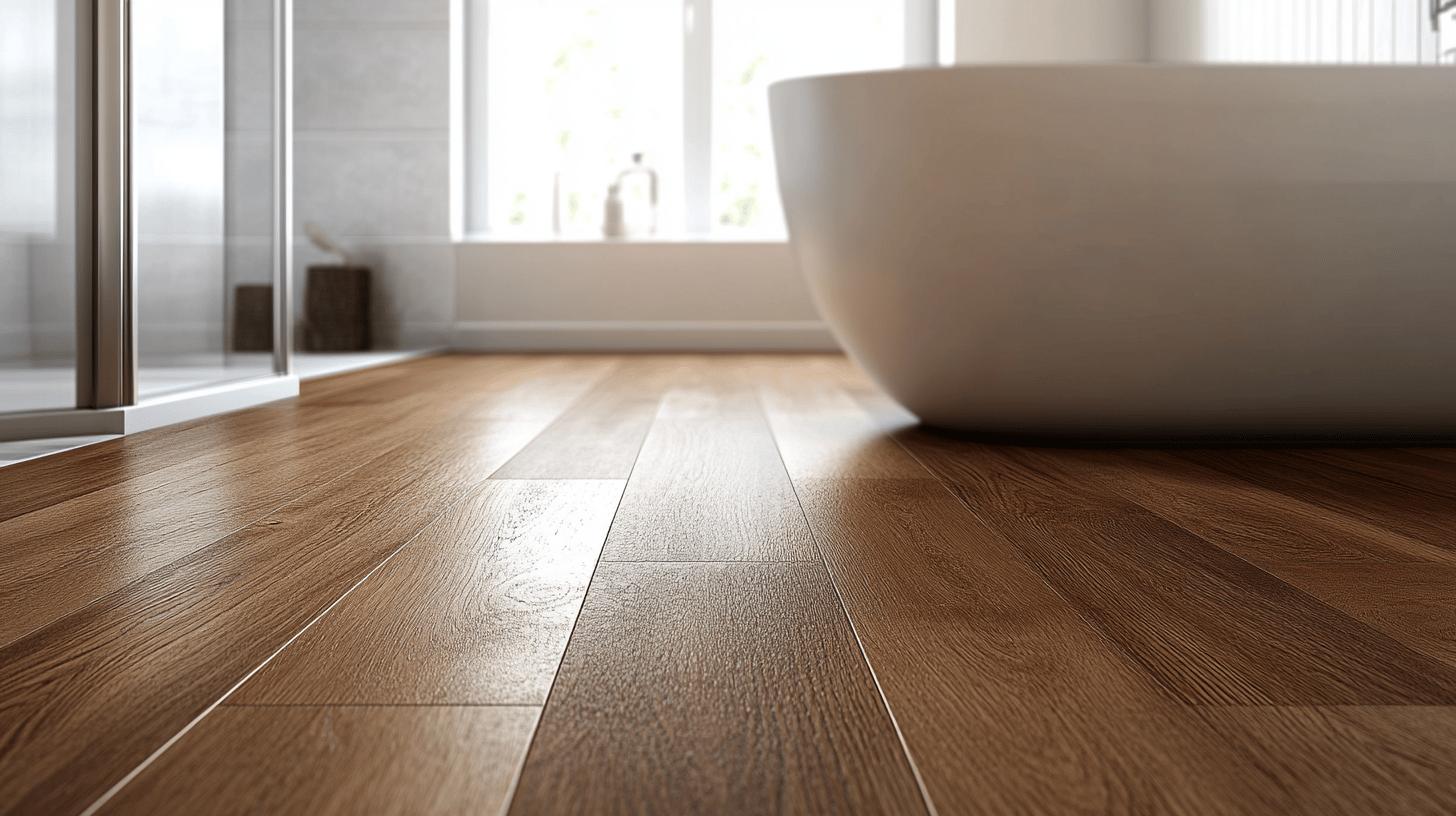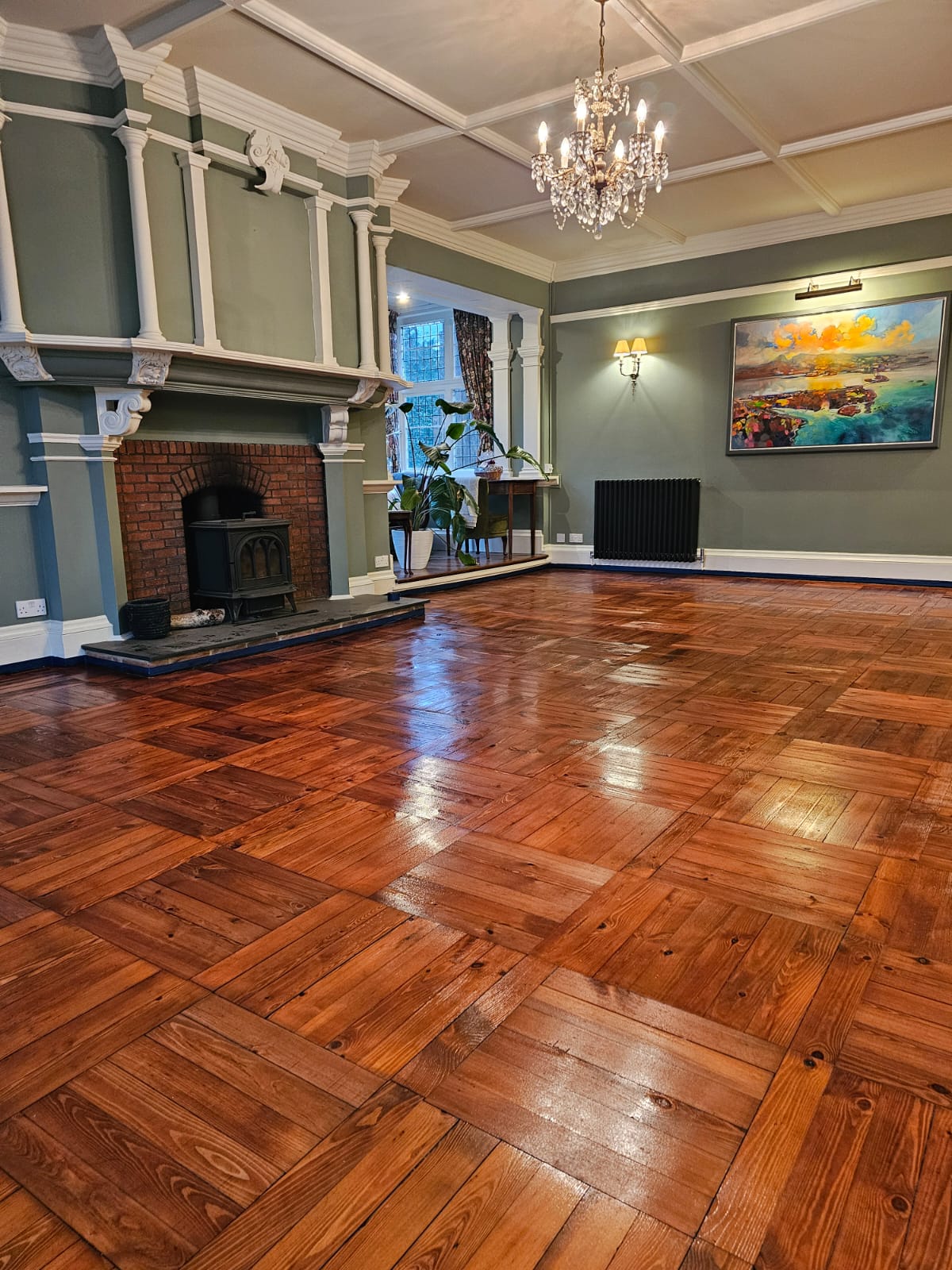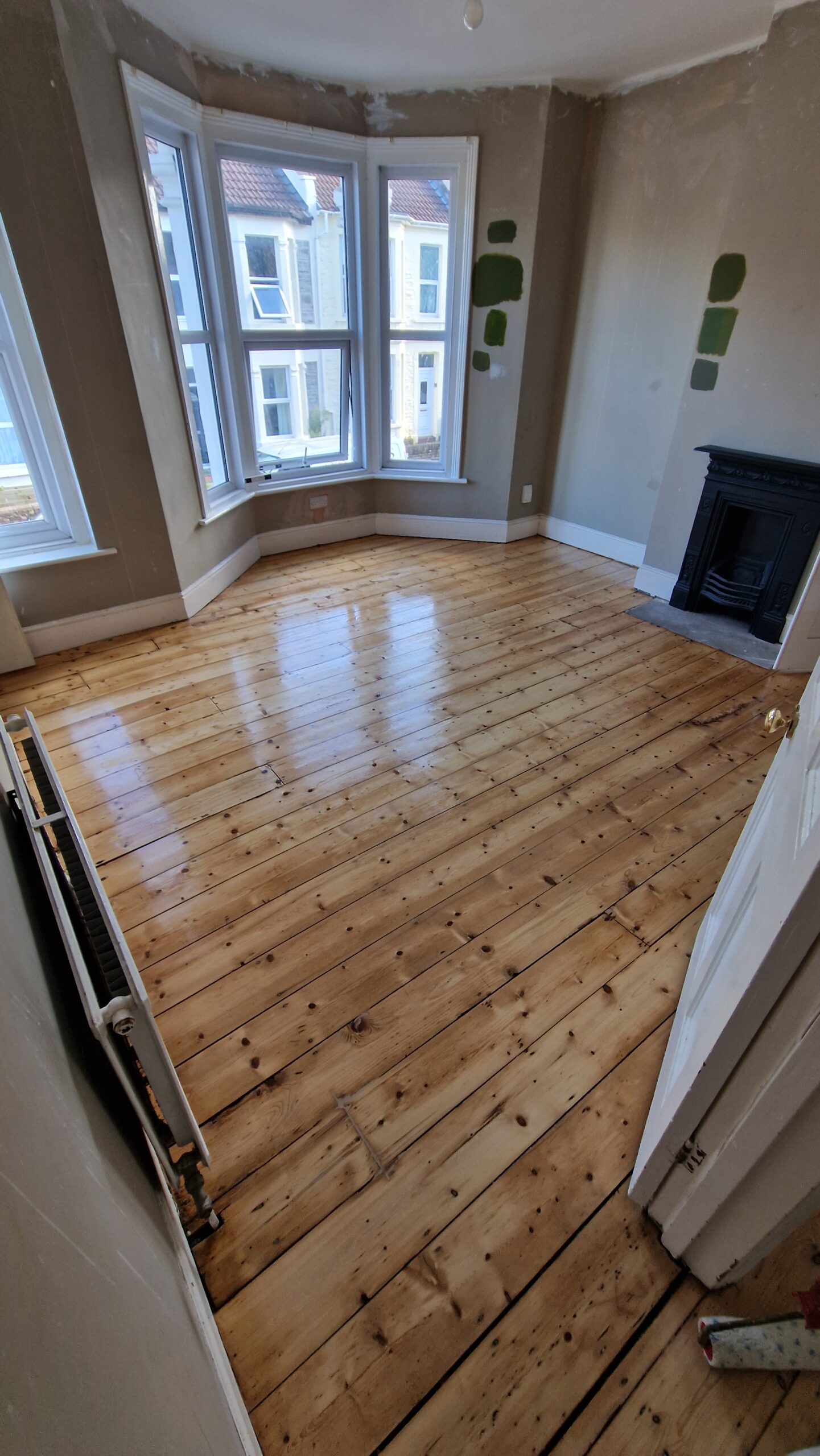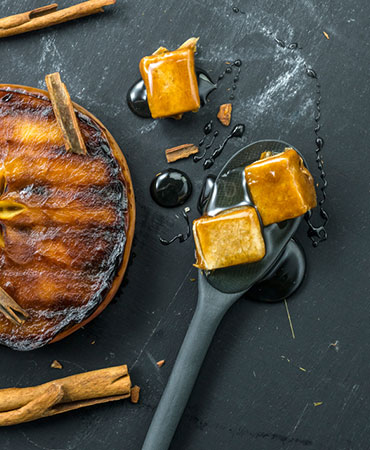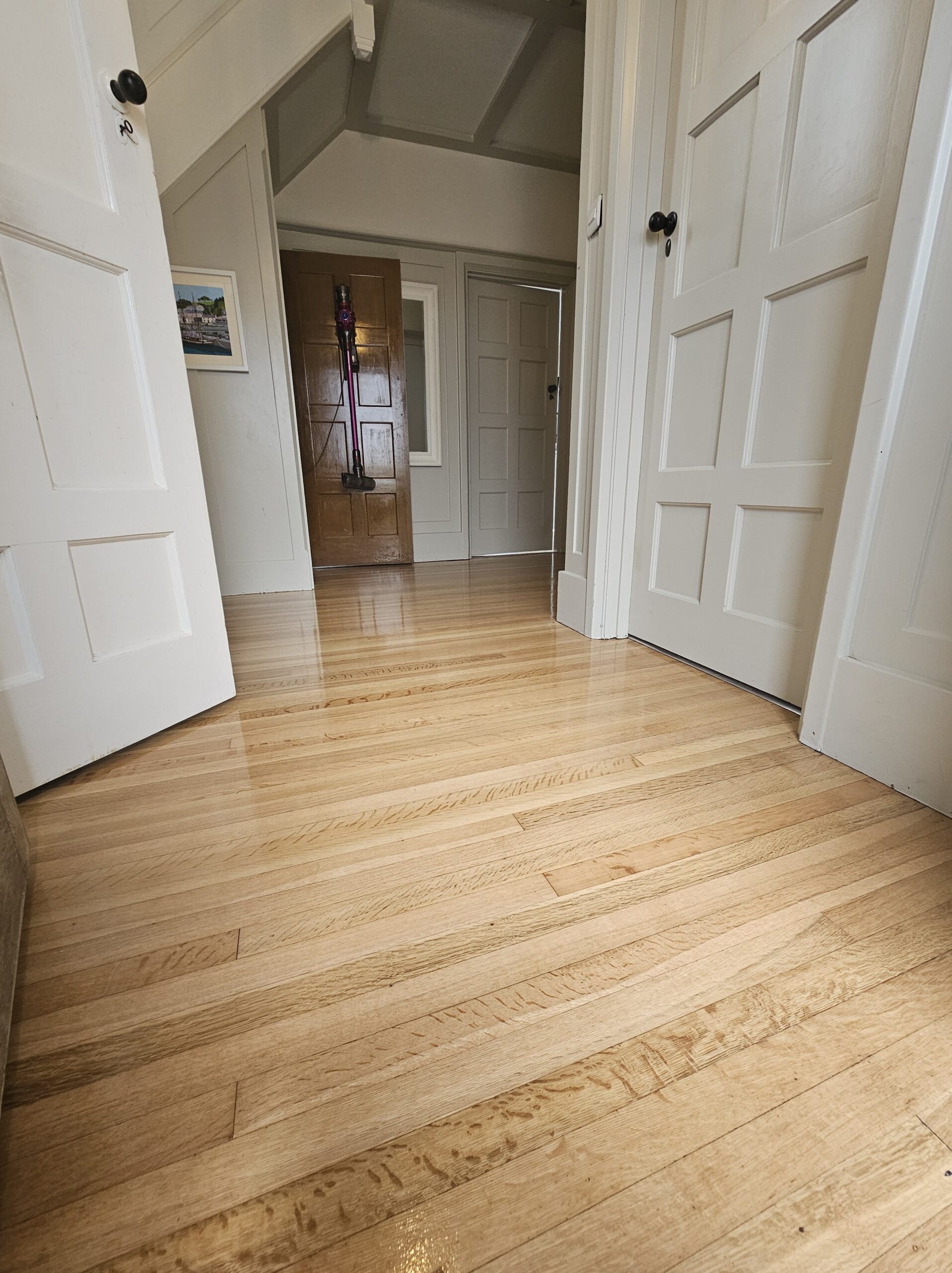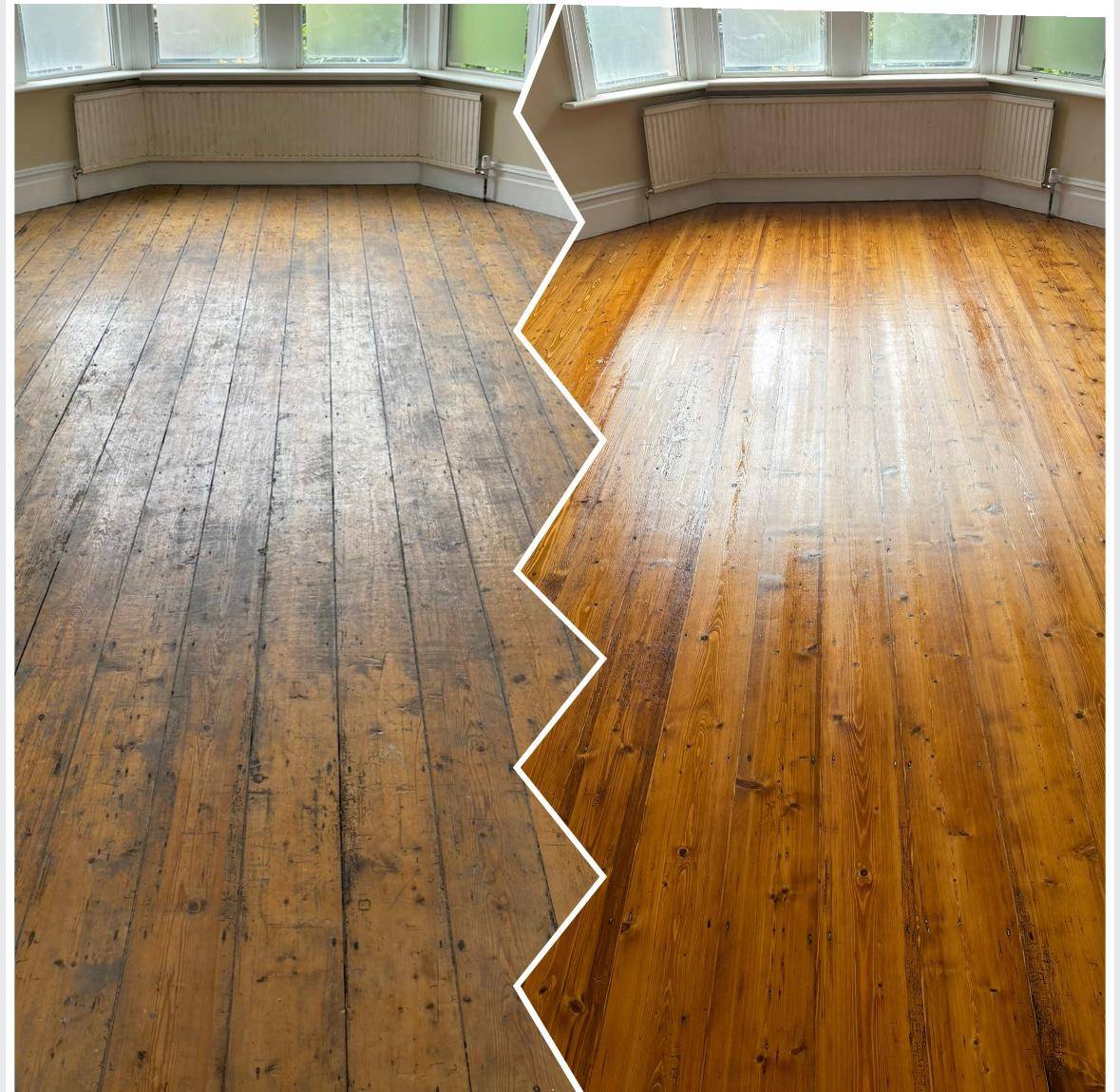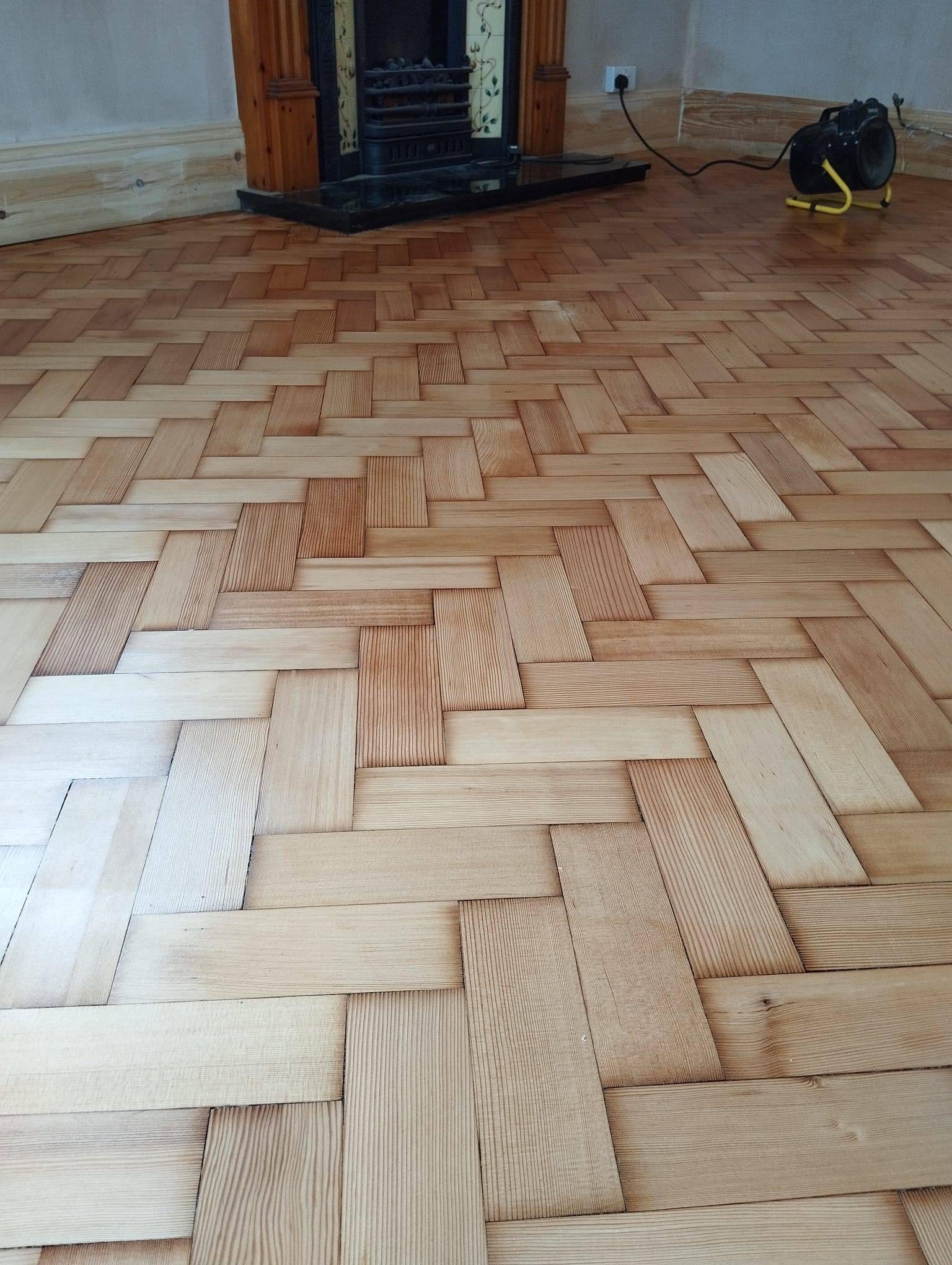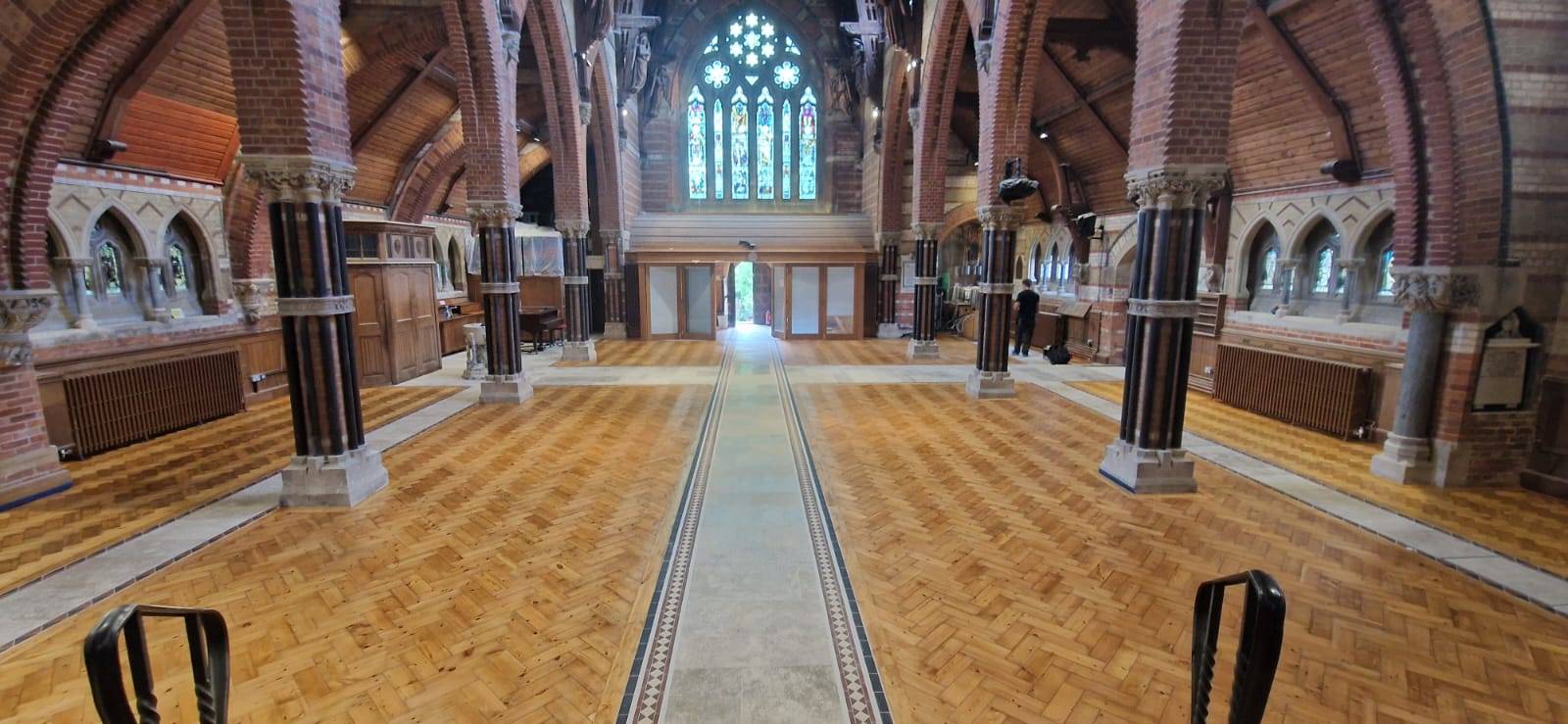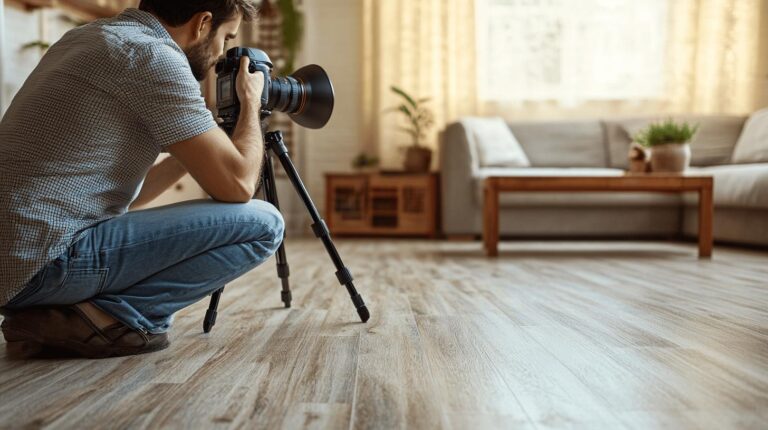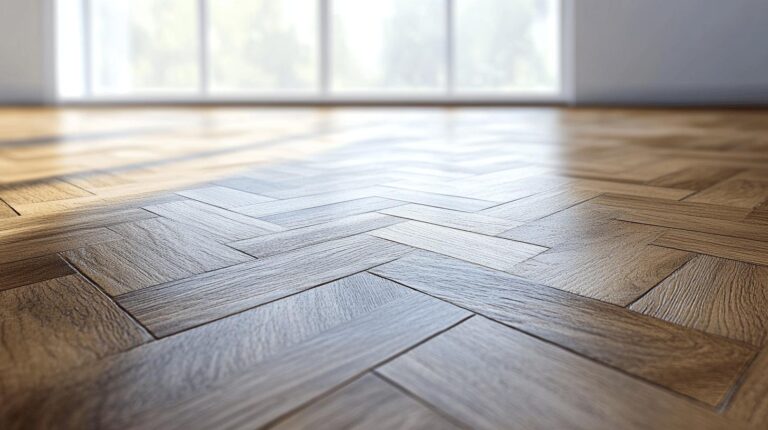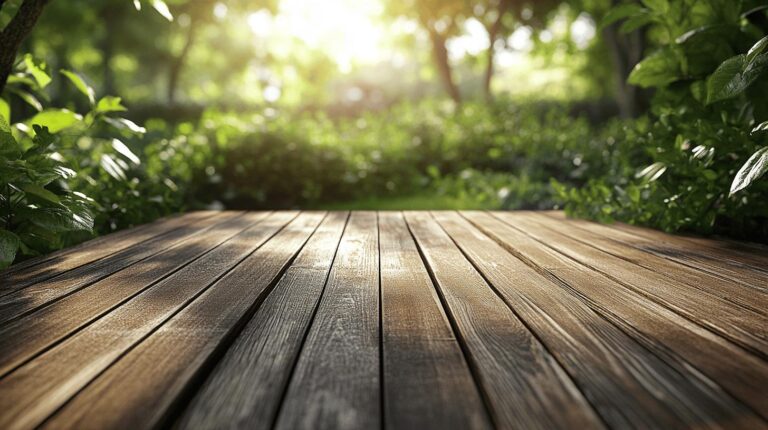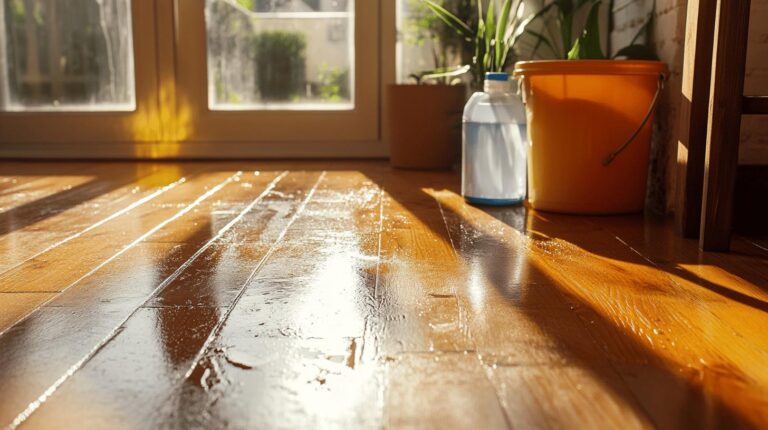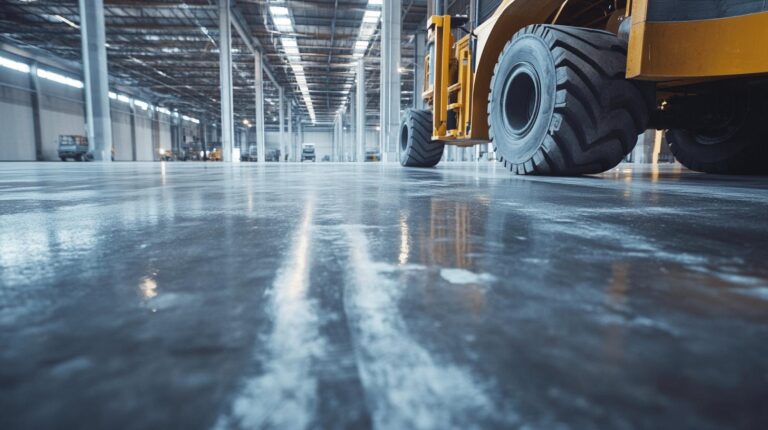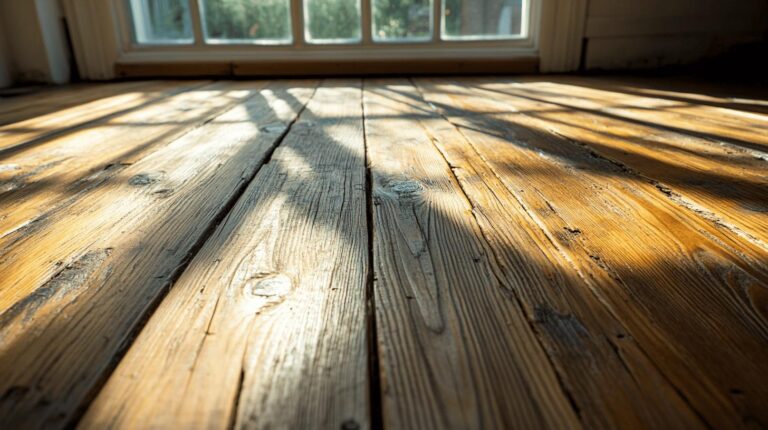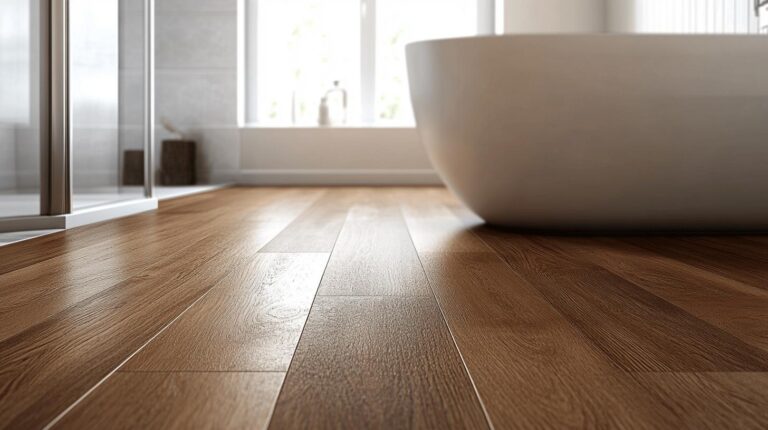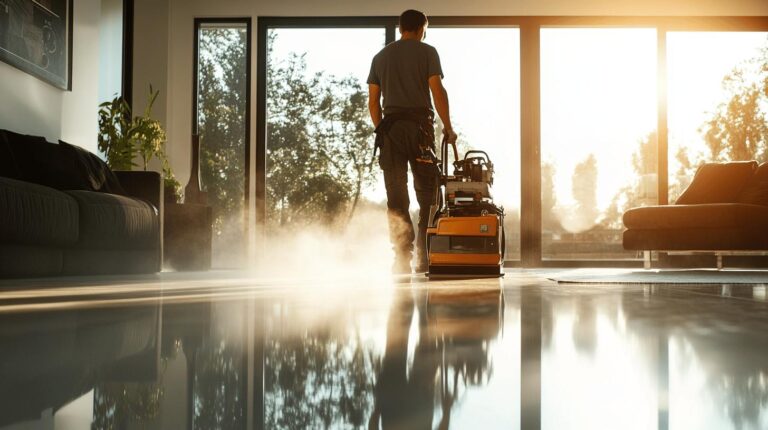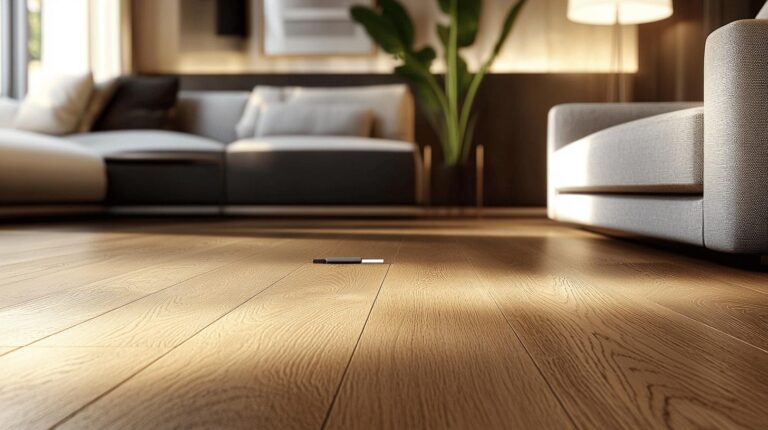Can hardwood floors truly withstand the humid atmosphere of a bathroom, or are they destined for water damage? As more homeowners seek to blend style with function, the allure of bathroom hardwood installations grows. However, your dream flooring could quickly turn into a nightmare without the proper protective measures in place. This comprehensive guide explores the pivotal roles of vapour barriers and sealers in safeguarding your hardwood floors against moisture damage, ensuring that elegance doesn’t come at the cost of durability. Discover critical insights into effective strategies that will keep your bathroom floors looking pristine for years.
Choosing the Right Hardwood for Bathroom Use
Selecting the appropriate hardwood for bathroom use is crucial due to the unique challenges posed by moisture and humidity. Durable and moisture-resistant hardwood species are essential to ensure longevity and maintain aesthetic appeal. Unlike softwoods, which are prone to warping and damage from moisture exposure, certain hardwoods offer superior durability and resistance. For example, hardwood species like maple provide a more robust solution compared to softwoods such as fir and pine.
Recommended hardwood species for bathroom installations include teak, oak, cedar, cherry, maple, ash, walnut, and hickory. These hardwoods are favoured for their density and ability to withstand moisture-related challenges. Teak, for instance, is highly resistant to water and decay, making it a popular choice for wet areas. Similarly, oak and maple offer substantial hardness and stability, providing a balance of strength and beauty.
When selecting hardwood for bathroom use, several factors should be considered:
- Density: Opt for dense hardwoods that offer better moisture resistance.
- Moisture Resistance: Choose species known for their natural resistance to water.
- Aesthetic Appeal: Consider the wood’s grain pattern and colour to match your bathroom design.
- Durability: Ensure the hardwood can withstand daily wear and tear.
- Maintenance Needs: Select hardwood that aligns with your ability to perform necessary upkeep.
.
These considerations will help in choosing the right type of hardwood that not only enhances the bathroom’s aesthetic but also withstands the demanding environment effectively.
The Importance of Vapour Barriers for Hardwood in Bathrooms
Vapour barriers play a critical role in protecting hardwood floors in bathrooms by preventing moisture from penetrating through to the subfloor, which can lead to warping, mould growth, and other structural issues. A vapour barrier is a material used to resist moisture transmission, acting as a shield between the hardwood and potential dampness. This is particularly important in bathrooms, where humidity levels are high and water exposure is frequent. Without an effective vapour barrier, moisture can seep through gaps and joints, compromising the integrity of the flooring system.
Several materials can be used as vapour barriers, each offering varying levels of effectiveness. Popular options include epoxy sealants, which provide a durable and impermeable layer, and plastic sheeting, known for its ease of installation and cost-effectiveness. However, a primary challenge when using traditional vapour barriers arises from the nailing installation method commonly used for hardwood flooring, which can puncture the barrier and allow moisture to infiltrate. To mitigate this, it’s crucial to select a vapour barrier material that accommodates the installation method while maintaining moisture resistance.
Installation Considerations
To ensure effective moisture protection, follow these essential steps when installing vapour barriers:
- Prepare the subfloor by ensuring it is clean, dry, and level before installation.
- Select a vapour barrier material suitable for the installation method to prevent punctures.
- Ensure the vapour barrier covers the entire subfloor area, extending up the walls slightly.
- Overlap the edges of the barrier sheets by at least 20 cm to prevent gaps.
- Secure the barrier in place using moisture-resistant tape or adhesive.
- Regularly inspect the barrier during installation to ensure no damage occurs.
.
These steps, when carefully followed, will contribute to a robust moisture defence, safeguarding the hardwood floors from potential water damage.
Sealing Techniques for Hardwood Floors in Bathrooms
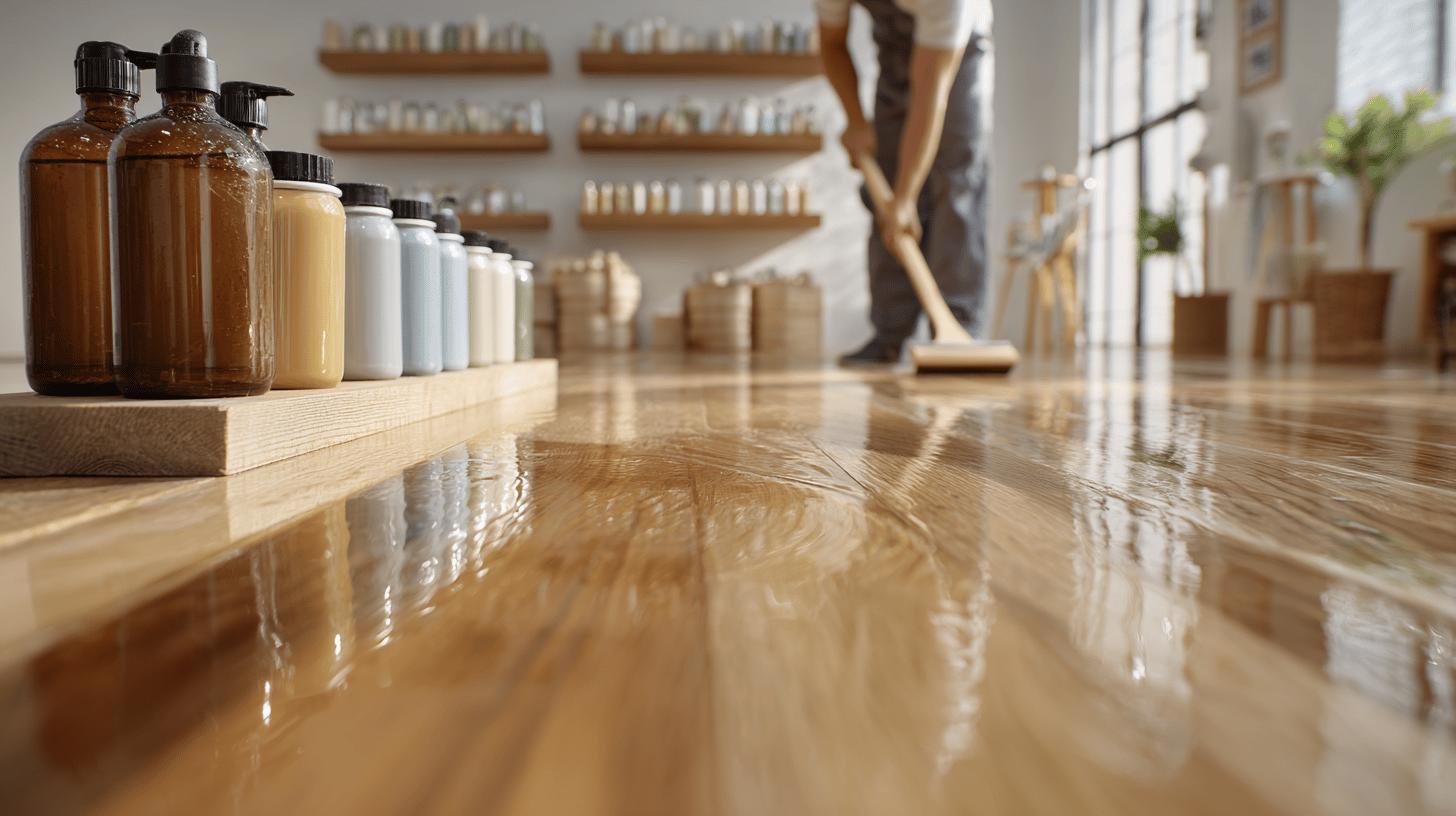
Sealing hardwood floors in bathrooms is essential for protecting the wood from moisture damage. What is the primary benefit of sealing hardwood floors in wet areas? Sealing creates a barrier that prevents water penetration, reducing the risk of warping, swelling, and decay. In high-humidity environments like bathrooms, this protective layer is crucial to maintain the floor’s integrity and appearance over time.
Several types of sealers are suitable for hardwood floors, each offering unique benefits. Polyurethane-based sealers are highly effective, providing a durable and invisible barrier against water ingress. They are particularly recommended for areas where moisture exposure is frequent. Marine-grade sealers, designed for use in harsh, wet conditions, offer enhanced protection and are ideal for bathrooms. For specialty treated woods, such as thermally modified wood, sealing is critical to enhance their resistance in wet environments, ensuring the wood’s longevity and performance.
Applying sealers correctly is key to maximising their protective benefits. Before sealing, ensure the floor is clean and dry. Apply the sealer evenly using a brush or roller, following the manufacturer’s instructions for application and drying times. Multiple coats may be necessary for optimal protection, with light sanding between coats to ensure adhesion. What is a critical step in sealing hardwood floors? Ensuring even application and adequate drying time between coats is vital to achieving a seamless and effective water barrier.
| Sealer Type | Advantages |
|---|---|
| Polyurethane-Based | Provides a durable, invisible barrier against water |
| Marine-Grade | Offers enhanced protection in harsh, wet conditions |
| Specialty Treated Wood Sealers | Enhances resistance of treated wood in wet areas |
By selecting the appropriate sealer and applying it correctly, hardwood floors in bathrooms can be effectively protected from moisture, ensuring they remain in excellent condition for years to come.
Maintaining Hardwood Floors in Humid Bathroom Environments
Maintaining hardwood floors in a humid bathroom environment presents unique challenges due to constant exposure to moisture and fluctuating humidity levels. What is the primary challenge of maintaining hardwood in humid bathrooms? The primary challenge is preventing moisture from penetrating the wood, which can lead to warping, swelling, and even mould growth. Effective bathroom humidity management is crucial to preserve the integrity and aesthetic of hardwood floors. Regular maintenance, such as cleaning and sealing, is essential to protect the floors and avoid costly repairs. By implementing moisture control strategies, such as proper ventilation and dehumidification, one can significantly reduce the risk of water damage.
To extend the lifespan of hardwood floors in bathrooms, practical maintenance tips should be followed diligently. Regular sweeping or dry mopping helps prevent scratches and maintains the floor’s finish. Ensuring that spills are promptly wiped up and that water is not left to sit can greatly reduce the risk of damage. Sealing hardwood floors with a suitable sealer forms a protective barrier against moisture, enhancing the floor’s durability.
Practical maintenance tips to preserve hardwood floors in bathrooms include:
- Use absorbent mats in areas prone to water splashes, such as near the sink and bathtub.
- Maintain optimal humidity levels between 30-50% using a dehumidifier to prevent excess moisture buildup.
- Regularly check for signs of water damage or mould and address issues immediately.
- Apply protective sealers periodically to maintain a barrier against water ingress.
- Ensure proper bathroom ventilation by using exhaust fans to expel moisture-laden air.
.
These measures, when consistently applied, will help maintain the beauty and functionality of hardwood floors in bathroom settings.
Professional Insights: Case Studies and Expert Recommendations
Expert recommendations play a pivotal role in the successful installation of hardwood floors in bathrooms. What is the primary importance of involving professionals in this process? The primary importance is ensuring that the flooring can withstand the humid environment typically found in bathrooms. Professionals bring a wealth of experience and knowledge, particularly in selecting the right materials and installation techniques that minimise moisture-related risks. By choosing suitable wood species and implementing effective moisture management strategies, hardwood flooring can offer both beauty and practicality in bathroom settings.
One noteworthy case study involves the transformation of a residential bathroom where engineered hardwood was installed. The project required meticulous attention to moisture management due to the high humidity and frequent water exposure common in bathrooms. The flooring experts selected teak, known for its exceptional moisture resistance, and ensured thorough subfloor preparation, which included the application of an epoxy sealant as a vapour barrier. This installation also featured marine-grade sealers to provide an additional layer of protection. What was the outcome of this installation? The outcome was a stunning bathroom floor that not only enhanced the space’s aesthetic appeal but also remained in excellent condition over time, demonstrating the effectiveness of expert planning and execution.
Lessons from the Field
Key takeaways from real-world experiences underline the importance of several professional practices. Firstly, selecting hardwood species with natural moisture resistance, such as teak or oak, is crucial. Secondly, the application of appropriate vapour barriers and sealers can significantly extend the life of the flooring. Finally, regular maintenance, including reapplying sealers and managing humidity levels, helps to ensure long-term performance. What is a critical piece of professional advice for homeowners? A critical piece of advice is to engage with experienced professionals who can tailor solutions to the specific challenges of bathroom environments, ensuring that the hardwood installation is both durable and visually appealing.
Final Words
Integrating hardwood into bathroom spaces demands thoughtful selection, effective barriers, and sealing strategies.
Choosing durable and moisture-resistant species lays the groundwork. Implementing vapour barriers ensures vital moisture protection, while the right sealers secure the surface.
Consistent maintenance and expert installation advice complete the process. This holistic approach ensures hardwood flooring in bathrooms remains functional and aesthetic.
By focusing on hardwood, vapour barriers, and sealers, one can achieve a long-lasting, visually pleasing bathroom floor. With detail-oriented planning and execution, hardwood can truly thrive in bathroom environments.
Waterproof your bathroom floor → Wood Floor Sealing
FAQ
Q: What are the pros and cons of wood floors in bathrooms?
A: Wood floors add warmth and aesthetic appeal to bathrooms but require diligent maintenance against moisture. Pros include durability if properly sealed; cons involve potential water damage and warping if not correctly installed.
Q: How can wood flooring in bathrooms be waterproofed?
A: To waterproof wood flooring, it is essential to apply a high-quality sealer, such as a polyurethane-based product, ensuring the surface is sealed against moisture. Regular maintenance and monitoring are also crucial.
Q: What is the best finish for hardwood floors in a bathroom?
A: The best finish for hardwood in bathrooms is typically a water-resistant polyurethane-based sealer. This finish provides a robust barrier against moisture, enhancing the wood’s durability and longevity.
Q: Does hardwood flooring need a vapour barrier for bathroom use?
A: Yes, using a vapour barrier is vital to prevent moisture from reaching the subfloor, which could lead to damage. Materials like epoxy sealants or plastic sheeting are effective for this purpose.
Q: Is it okay to put hardwood flooring in a bathroom?
A: Hardwood can be used in bathrooms if high-quality, moisture-resistant species are chosen and proper waterproofing measures are applied, such as using sealers and vapour barriers to prevent water damage.
Q: What are the recommended hardwood species for bathrooms?
A: Recommended species include teak, oak, cedar, and maple. These woods are dense and moisture-resistant, making them suitable for the high-humidity environment of bathrooms.
Q: What steps are involved in installing a vapour barrier for hardwood in a bathroom?
A: Installation involves cleaning the subfloor, laying plastic sheeting, sealing edges, applying an adhesive, installing underlay, and finally checking for any leaks or gaps to ensure durability and moisture resistance.
